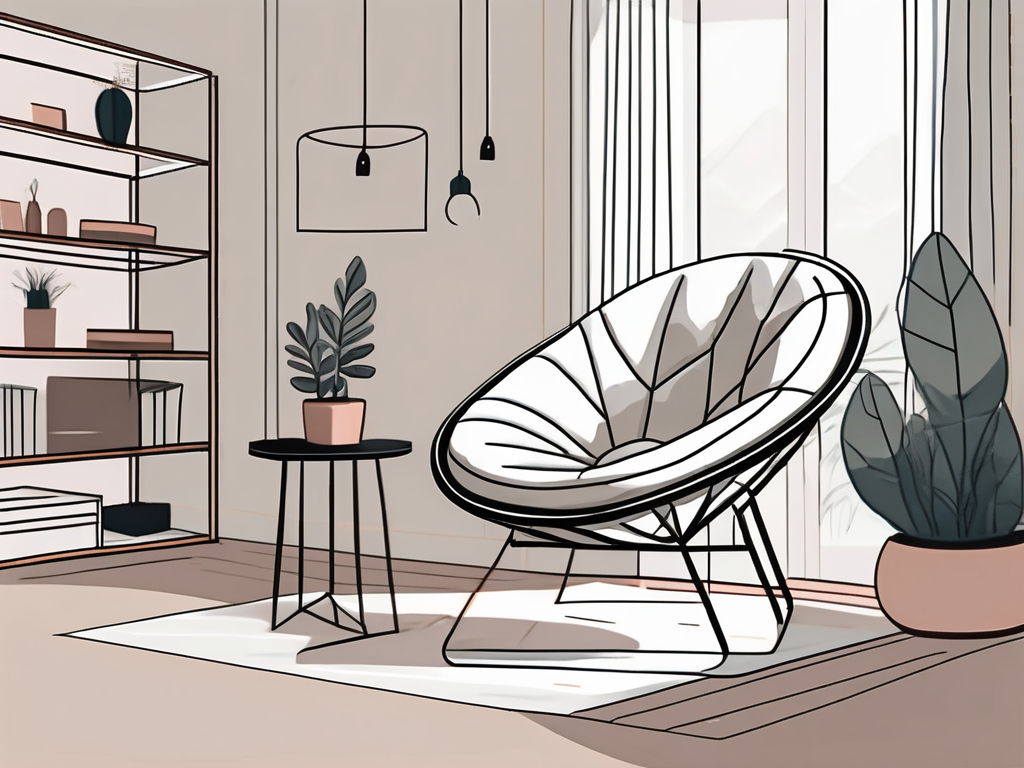Why Furniture Dupes Might Be Harming Your Health (And What to Watch Out For)
Furniture dupes may save you money but can harm your health due to toxic chemicals, poor ergonomics, and off-gassing. Choose furniture made from safer, certified materials, and prioritize natural, ergonomic options for better long-term health.

Photo by Roberto Sorin / Unsplash
That budget-friendly furniture dupe might be saving you money, but is it costing you your health? While dupes are incredibly popular for offering affordable alternatives to high-end designs, they often come with hidden risks that go beyond style or durability. Many of these inexpensive copies are produced using materials and construction techniques that can negatively impact your health, from poor ergonomics to toxic off-gassing. Let’s take a closer look at why furniture dupes might be harming your health—and what to watch out for when buying them.
1. Use of Harmful Materials
One of the primary reasons dupes are so much cheaper than their high-end counterparts is the use of lower-quality materials. Unfortunately, these budget materials often contain harmful chemicals that can put your health at risk.
Cheap Materials, Big Risks
Dupes are typically made with synthetic or chemically treated materials, which can pose serious health risks when used over time. These materials are often chosen because they’re inexpensive and can mimic the look of more premium materials, but they’re far from harmless.
Toxic Chemicals in Furniture
Many low-cost dupes are made with substances that can release toxic chemicals into your home environment. Some of the most common culprits include:
- Formaldehyde, which is found in pressed wood products like particleboard or medium-density fiberboard (MDF). Formaldehyde can cause respiratory issues, skin irritation, and has been classified as a carcinogen in high doses.
- Phthalates and VOCs (Volatile Organic Compounds), often found in adhesives, varnishes, and synthetic fabrics. These chemicals can off-gas into your living space, affecting indoor air quality and leading to headaches, dizziness, and allergic reactions.
Long-Term Exposure Risks
While the immediate effects of these chemicals might be mild—like irritation or allergic reactions—long-term exposure to poor-quality furniture materials can have more serious consequences. Chronic exposure to formaldehyde or VOCs has been linked to respiratory issues, eye irritation, and even more serious health concerns like hormonal disruptions and neurological problems.
2. Poor Ergonomics: The Physical Costs of Cheap Dupes
Furniture isn’t just about aesthetics—it’s about comfort and function. However, many dupes prioritize appearance over ergonomic design, leaving you with pieces that look good but fail to support your body properly.
Ergonomic Shortcuts in Dupes
Dupes often cut corners when it comes to providing the necessary ergonomic support for your body. They may look similar to their high-end counterparts, but they lack the thoughtful design elements that make furniture comfortable and supportive over time.
Impact on Posture
Cheap dupes can contribute to serious posture issues due to their poor design. Here are some of the common ergonomic pitfalls:
- Lack of Lumbar Support: Chairs, sofas, or office furniture with inadequate lumbar support can lead to lower back pain or discomfort after long periods of sitting.
- Poor Cushioning and Alignment: Inexpensive mattresses and seating options may not have the proper structure or padding to align your spine correctly, leading to long-term discomfort or stiffness.
Real Health Impacts
Over time, using poorly designed dupes can lead to chronic issues such as back pain, tension headaches, and muscle strain. A chair or sofa that doesn’t support your posture can force your body into uncomfortable positions, which can cause discomfort after just a few hours of use—and even lead to long-term damage.
3. Off-Gassing: The Invisible Danger in Your Home
Have you ever noticed a strong chemical smell coming from new furniture? That’s off-gassing—when furniture materials release volatile organic compounds (VOCs) into the air. It’s particularly common with cheap dupes made from synthetic materials.
What is Off-Gassing?
Off-gassing happens when certain materials, like synthetic foams, adhesives, and finishes, release harmful VOCs into the air. This process can continue for months, even after the strong initial smell fades.
Dupes and Off-Gassing
Dupes, especially those made from composite wood, synthetic fabrics, and faux leather, are often culprits of significant off-gassing. These lower-cost materials can emit high levels of VOCs over time, which can linger in your home and affect the air you breathe.
Health Effects of Off-Gassing
Off-gassing can cause a range of health issues, especially in small or poorly ventilated spaces. Some common symptoms of VOC exposure include:
- Eye, nose, and throat irritation
- Headaches and dizziness
- Nausea and respiratory problems
Long-term exposure to high levels of VOCs can also be linked to more serious health problems, including damage to the liver, kidneys, and nervous system.
Indoor Air Quality
Your indoor air quality is crucial for overall health, and cheap dupes can significantly degrade it. When synthetic materials are used in confined spaces, the concentration of VOCs can build up, contributing to poor air quality and increasing your risk of health issues.
4. How to Identify Healthier Furniture Choices
The good news is that not all affordable furniture comes with these risks. Here are some steps you can take to ensure you’re making safer choices for your home.
Look for Certifications
Furniture that’s healthier for you and your family often comes with specific certifications that ensure it’s made from safer materials. Some key certifications to look for include:
- Greenguard: This certification ensures that the product has low chemical emissions, contributing to better indoor air quality.
- OEKO-TEX: This label certifies that textiles are free from harmful substances, ensuring safer fabrics for upholstery.
- FSC (Forest Stewardship Council): This certifies that the wood used in furniture is sustainably and responsibly sourced, and often less chemically treated.
Opt for Natural Materials
When in doubt, natural materials are generally a safer bet. Furniture made from solid wood, organic cotton, natural latex, and wool is less likely to contain harmful chemicals and off-gas. These materials are durable, sustainable, and typically free from the toxins found in synthetic alternatives.
Avoid Synthetic Foams and Fabrics
Synthetic foams and fabrics often off-gas harmful VOCs, so try to avoid cheap foam-filled cushions or synthetic upholsteries. Instead, look for memory foam, natural latex, or cotton-wrapped cushions for safer, more durable options.
5. Simple Ways to Reduce Harm from Existing Dupes
If you’ve already purchased a dupe or cheap furniture, there are still ways to reduce its potential health risks.
Ventilate and Air Out New Furniture
Whenever possible, air out new furniture by placing it in a well-ventilated area—preferably outside—before bringing it into your home. This can help reduce the concentration of VOCs that are off-gassed into your living space.
Use Air Purifiers
An air purifier with a HEPA filter can help trap VOCs and other harmful particles, improving your indoor air quality and reducing exposure to off-gassing chemicals.
Protective Barriers
For furniture you already own, consider adding a protective cover made from natural materials. A cotton slipcover, for example, can create a barrier between your skin and the harmful materials in the furniture, reducing direct exposure.
Conclusion: Weigh the Costs Beyond Price
While dupes might seem like a great way to get high-end looks at a lower price, the hidden health risks can make them a poor long-term investment. From toxic chemicals and off-gassing to poor ergonomic design, cheap furniture dupes can harm your health and wellbeing in ways you might not expect. Before you buy, take the time to research materials, look for certifications, and prioritize furniture that supports your health—not just your wallet.

Geoff Abraham
Co-founder & President of Spoken
Geoff is the co-founder and President of Spoken. He is a Dad. He holds a BA from UT Austin (Plan II) and an MBA from Stanford. Geoff has built several successful businesses, including a bicycle taxi business in San Francisco which he ran for 10 years with his wife, Mimosa. He is an executive coach, and he actively invests in seed-stage startups via The Explorer Fund.
Read more

